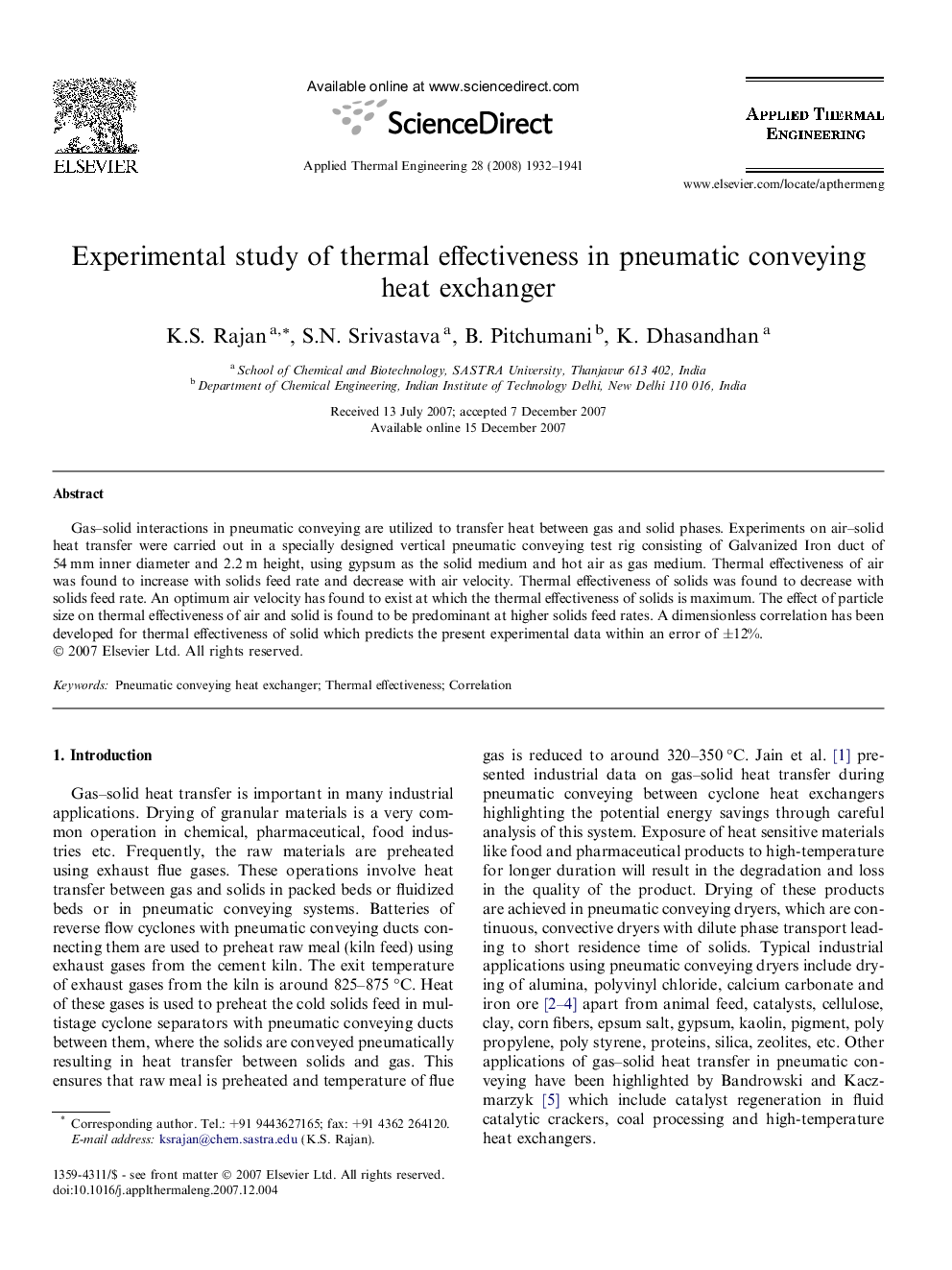| Article ID | Journal | Published Year | Pages | File Type |
|---|---|---|---|---|
| 648665 | Applied Thermal Engineering | 2008 | 10 Pages |
Gas–solid interactions in pneumatic conveying are utilized to transfer heat between gas and solid phases. Experiments on air–solid heat transfer were carried out in a specially designed vertical pneumatic conveying test rig consisting of Galvanized Iron duct of 54 mm inner diameter and 2.2 m height, using gypsum as the solid medium and hot air as gas medium. Thermal effectiveness of air was found to increase with solids feed rate and decrease with air velocity. Thermal effectiveness of solids was found to decrease with solids feed rate. An optimum air velocity has found to exist at which the thermal effectiveness of solids is maximum. The effect of particle size on thermal effectiveness of air and solid is found to be predominant at higher solids feed rates. A dimensionless correlation has been developed for thermal effectiveness of solid which predicts the present experimental data within an error of ±12%.
